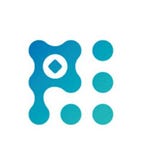Poriot breaks the shackles of Web 3.0 development
1. Web 1.0 is like dial-up internet, and Web 2.0 is like broadband network. So what is Web 3.0?
You might say that Web 3.0 is a blockchain, and this answer is right or wrong, because Web 3.0 is not just a blockchain, but a blockchain that provides users with network value in a fair manner.
Practitioners in the digital cryptocurrency industry have placed high expectations on Web 3.0, hoping to break the monopoly of Internet giants and bring more innovations through the combination. The existence of public chain technology makes people gradually aware of privacy, data, rights, censorship, and identity. And so on, the complete Web 3.0 should have the characteristics of a unified identity authentication system, data confirmation and authorization, privacy protection and anti-censorship, and decentralized operation.
In addition, the emergence of the token economy and digital assets also allows users as individuals to have the opportunity to participate in the development and operation of Web 3.0, participate in voting, participate in dividends, and achieve a benign interaction between developers and users, and at the same time contribute their own contributions. Data information can be exchanged for part of the income, which means more fair and reasonable.
There is no doubt that the public chain is the necessary infrastructure for Web 3.0, but with the rise of DeFi, NFT, and chain games, can the public chain in the crypto market now meet the development needs of Web 3.0?
2. Overview of the current development of the public chain track
Although “traditional” public chains such as Bitcoin and Ethereum are still the core carriers of the current Web 3.0 digital economy, in the context of faster and faster industry iterations, these two public chains seem to be somewhat “unbearable to bear the weight of the industry”.
First of all, Bitcoin’s public chain function seems to be weakening, and it tends to represent the role of “digital gold” as a store of value. Secondly, the performance problems of Ethereum have gradually surfaced, especially after the explosive growth of NFT and DeFi. It is becoming more and more difficult to carry market demand. Block size limitations, slow confirmation speeds, and network bandwidth have harmed some projects. Although “London” upgraded and deployed EIP-1559, the gas cost has not been reduced to the user’s acceptable range. Inside
At the same time, various Layer 2 solutions differ greatly in their implementation mechanisms, and practical applications (especially asset-heavy applications) are more demanding. If the two-layer solution cannot solve the incompatibility problem, then Lost the meaning of the second-tier solution, and it will not become a once-and-for-all method.
Compared with its original Poriot public chain, Poriot has the following three major advantages compared with the existing blockchain network: 1) Make the gas fee of the transaction close to 0 (only 4 micro Usdt Gas fee per transaction); 2) Form one Killer native public chains far surpass the current mainstream public chains (including but not limited to BitCoin, Ethereum, FileCoin, etc.) in terms of TPS, business latency, gas fees, security, etc., and the original POR proof mechanism is proposed , To realize the maximum benefit utilization of mining machine resources; so that the mining machine can serve all the ecology and applications on the chain. 3) Using multiple cross-chain mechanisms to couple with multiple public chains to seamlessly connect Poriot with existing and future rich blockchains. Poriot enables applications and token transactions to be seamlessly switched and transferred between Poriot and other public chains. ; For example, use smart contracts to connect to Ethereum and Layer 2 networks (such as zksync) or side chains (such as Polygon) built on Ethereum, and provide business access to other public chains through the JSONRPC-based web3 interface and smart contract mechanism.
In the blockchain world, the public chain is like an “operating system”, supporting various application products and dApps. Under the big ecology that is seamlessly compatible with EVM, Poriot is like an “app store” that aggregates projects on different blockchains and builds a safe, efficient, autonomous, stable, easy-to-use and transparent under the support of the POR consensus mechanism A brand-new value system in which users can use all kinds of dApps without barriers — and isn’t this the scene in the Web 3.0 era that we envisioned?
